Introduction
Private land use controls are essential tools for protecting the character of a community while balancing the interests of individual property owners. These controls come in various forms, such as conservation easements and deed restrictions, which help to preserve the natural state of the land. For instance, conservation burial grounds are green cemeteries that partner with conservation organizations to protect the land in perpetuity.
This reflects a growing trend towards green burial practices, which 60% of Americans now express interest in, valuing environmental responsibility and affordability.
Moreover, private nature reserves are increasingly being managed sustainably, with guidelines and practical steps outlined for their creation and long-term economic sustainability. Such reserves contribute to the global commitment of over 100 countries to protect 30% of their lands and waters by 2030. This is a testament to the importance of private land protection in complementing government-led conservation efforts.
Understanding the three-dimensional nature of property rights is critical in land use planning, including the rights to airspace and subterranean depths, which are regulated to ensure they do not infringe on private property rights. As property rights are a collective agreement regulated by law, they form a bundle of rights and obligations that define how land can be used and protected for future generations while respecting community values and environmental integrity.
Purpose of Private Land Use Controls
Private land use controls are essential tools for protecting the character of a community while balancing the interests of individual property owners. These controls come in various forms, such as conservation easements and deed restrictions, which help to preserve the natural state of the land. For instance, conservation burial grounds are green cemeteries that partner with conservation organizations to protect the land in perpetuity. This reflects a growing trend towards green burial practices, which 60% of Americans now express interest in, valuing environmental responsibility and affordability.
Moreover, private nature reserves are increasingly being managed sustainably, with guidelines and practical steps outlined for their creation and long-term economic sustainability. Such reserves contribute to the global commitment of over 100 countries to protect 30% of their lands and waters by 2030. This is a testament to the importance of private land protection in complementing government-led conservation efforts.
Understanding the three-dimensional nature of property rights is critical in land use planning, including the rights to airspace and subterranean depths, which are regulated to ensure they do not infringe on private property rights. As property rights are a collective agreement regulated by law, they form a bundle of rights and obligations that define how land can be used and protected for future generations while respecting community values and environmental integrity.
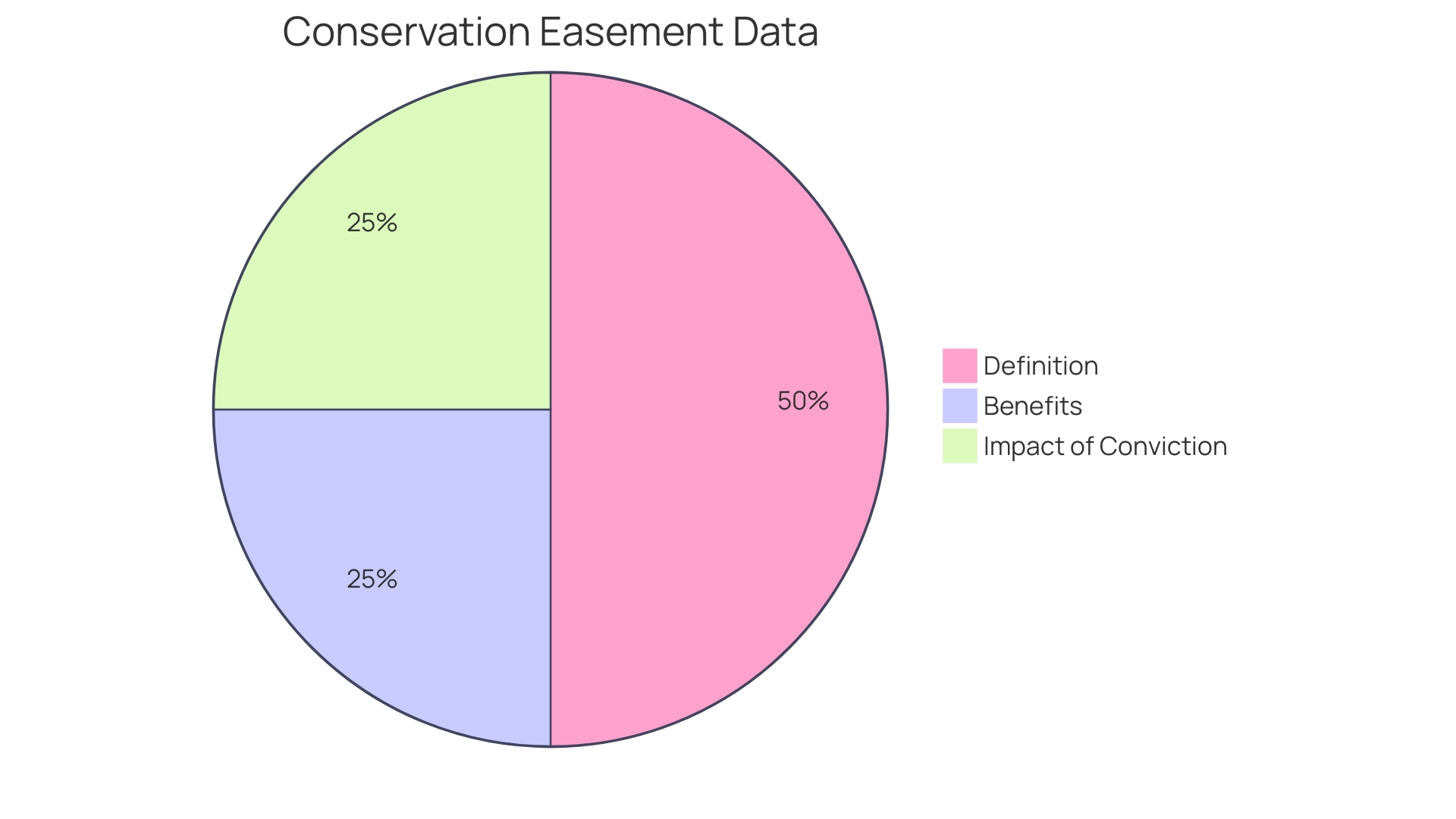
Types of Private Land Use Controls
Private land use controls are vital tools enabling property owners to govern the utilization and development of their estates, tailored to address specific concerns such as environmental protection and compliance with community standards. Restrictive covenants, for example, serve as binding agreements imposing precise limits on the use of land, particularly useful in areas prone to natural hazards, as they can stipulate construction standards that mitigate risk and align with policies aimed at reducing the likelihood and impact of events like wildfires.
Easements, granting rights to use parts of land for particular purposes, are also significant, especially in the context of conservation efforts. For instance, conservation easements are instrumental in preserving biodiversity and mitigating climate change, as they legally restrict land usage to protect ecosystems, aligning with global commitments to safeguard natural areas.
Homeowner association (HOA) rules are another form of private land control, where a community's governing body enforces regulations to uphold community standards and aesthetics. These rules can be pivotal in managing the delicate balance between private property rights and community interests, as seen in regions like Coyote Valley, where land preservation efforts often clash with development plans.
These private land use mechanisms are complemented by broader regulatory frameworks, such as proposed policies requiring councils to assess natural hazard risks in planning decisions. Similarly, the emergence of land banks reflects an innovative approach to urban planning and community development, allowing for strategic property management that prioritizes community goals over pure market-driven outcomes.
As these tools evolve, they reflect society's growing understanding of the multi-dimensional nature of property rights, emphasizing that such rights extend beyond mere possession to encompass a spectrum of responsibilities and collective agreements that shape our physical and social landscapes. Moreover, the integration of the private controls with public policies and conservation strategies underscores a collective move towards sustainable land use and responsible stewardship of our shared environment.
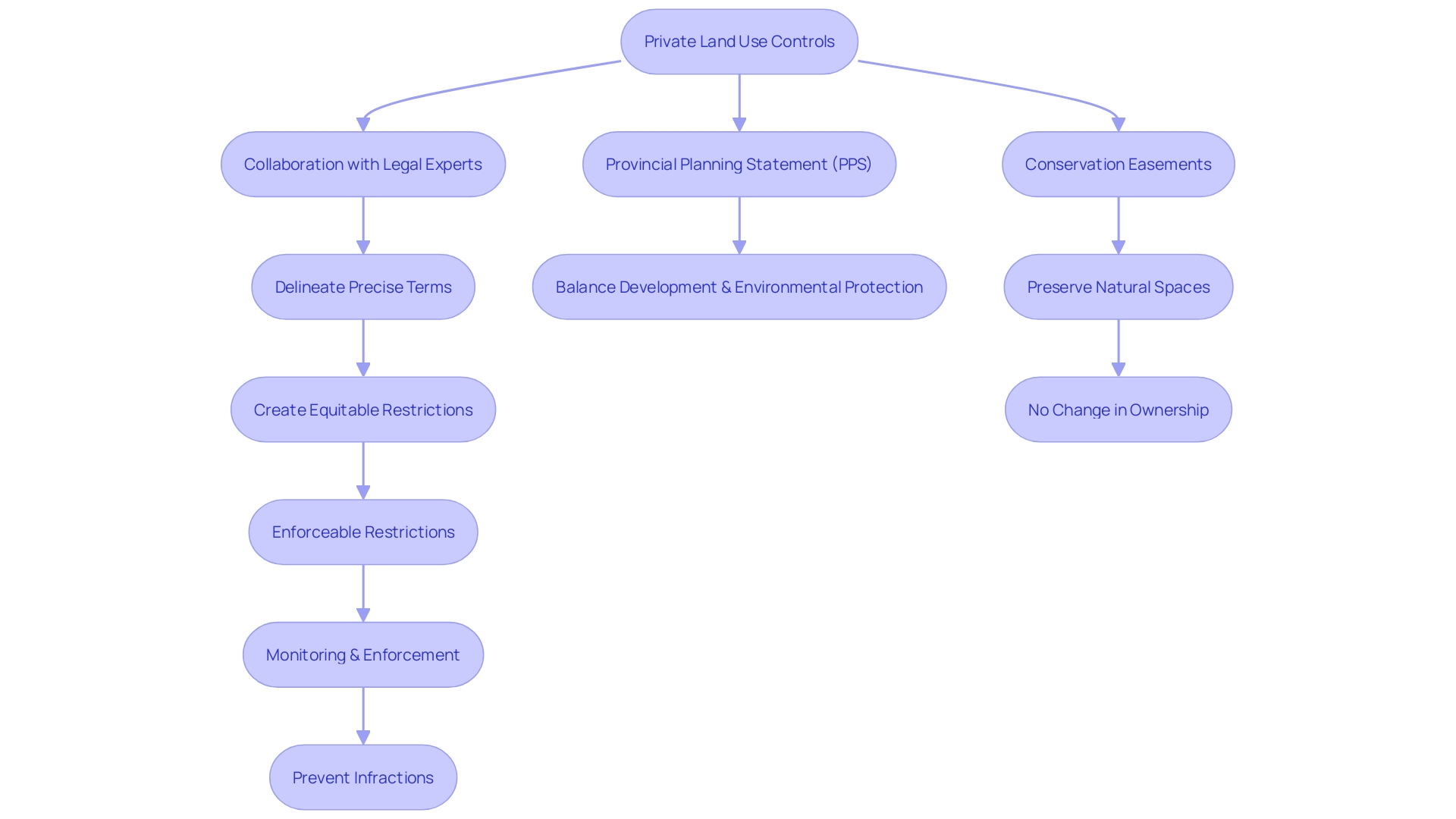
Deed Restrictions and Their Role
Deed restrictions, also known as restrictive covenants, are provisions placed within a property's deed that dictate specific conditions on the use, development, and appearance of the land. These stipulations are legally enforceable and often aim to preserve the aesthetic and structural uniformity of a community. For instance, they might mandate a consistent architectural style for all buildings within a neighborhood, regulate the types of landscaping permissible, limit noise levels, or restrict the operation of businesses within a residential area.
Reflecting on the historical context of land use, the United States was built on the principle that property ownership encompasses the right to use the land. However, modern zoning practices have established a framework within which property use is regulated to maintain order and protect neighborhood character. Somerville, Massachusetts, serves as an example of a city where zoning and land use policies have shaped a desirable, yet expensive, living environment due to high demand for its walkable and vibrant community.
In recent years, some cities like Minneapolis have enacted zoning reforms to address issues such as housing affordability and racial justice. These reforms have involved broadening community engagement to include voices often left out of the conversation, leading to significant changes in land use policy. The impact of these changes on property values and development is complex and multifaceted, as illustrated by debates over the implications of increased density for property tax assessments.
The evolution of zoning and land use regulation reflects an ongoing dialogue between the rights of property owners and the collective interests of the community. With the growing need for more diverse and affordable housing options, cities are reconsidering traditional zoning restrictions, like those in Minneapolis and Somerville, to better meet the needs of their residents while preserving the unique character of their neighborhoods.
Compliance with Zoning Laws and Other Regulations
Navigating the complex landscape of zoning laws is paramount for property owners. These laws categorize land into various zones, each with specific permissible uses and development criteria. For instance, one might encounter areas designated solely for residential use, while others are set for commercial or industrial activities. Adherence to these regulations is not optional but a legal requirement, as non-compliance could lead to serious legal repercussions.
Cities like Minneapolis have demonstrated that zoning reforms can have a positive impact, though not always as substantial as hoped. The Urban Institute's findings suggest that easing land use restrictions typically yields an average 0.8% increase in housing supply over a medium-term span of 3 to 9 years. This underscores the fact that zoning laws are deeply ingrained in urban planning and adjustments to these laws often involve incremental rather than radical changes.
Moreover, recent zoning amendments in Mountain View reflect the ongoing efforts to modernize and clarify zoning regulations, ensuring they are in line with state laws and accessible to builders and developers. This meticulous revision process, although amplified by the irregularities due to the pandemic, is indicative of the dynamic nature of zoning laws.
Understanding zoning is also critical from a taxation perspective, as property taxes and the spatial distribution of real estate taxes can significantly affect housing prices. The case of Coral Gables, where a homeowner has battled to preserve the family home amidst burgeoning development, illustrates the personal impact that zoning and land use decisions can have on individuals.
In summary, property owners must be vigilant and informed about the zoning laws that govern their land to ensure they can utilize their property effectively and legally, while also being mindful of the broader implications these regulations have on urban development and housing affordability.
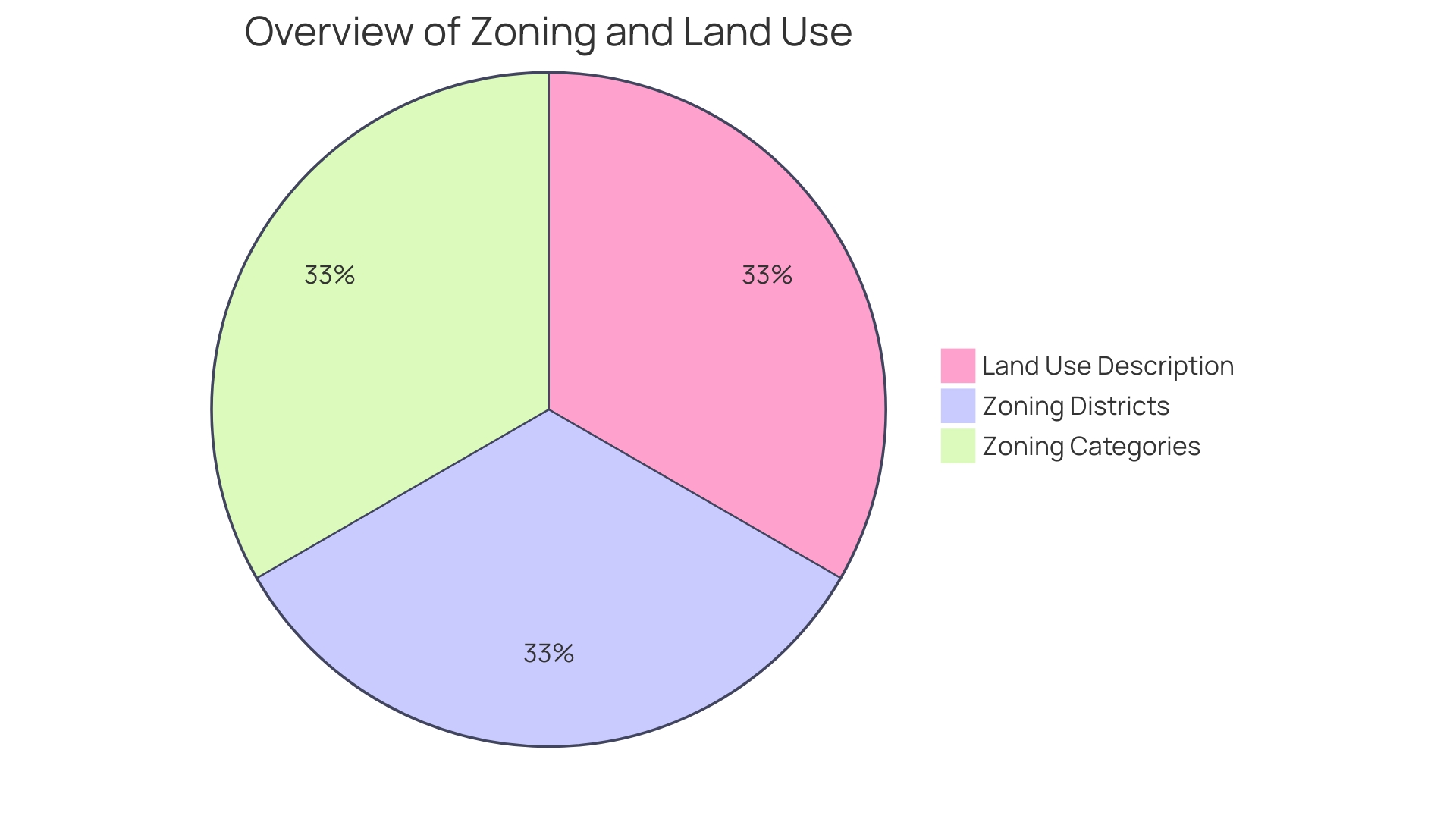
Examples of Private Land Use Controls
Private land use controls are tailored to shape the development and usage of land according to the nuanced needs of a property. These controls, defined through legal frameworks and historical precedents, establish a three-dimensional space within which property rights are exercised. For instance, common law once recognized rights to access sunlight or wind, which could restrict vertical development on neighboring lands. However, with the evolution of technology, such as air travel, the rights to airspace and subsurface strata have been redefined, detaching them from the private property rights bundle at certain heights and depths to accommodate public utilities like aviation corridors and underground tunnels.
These private land use controls manifest in various forms, such as restrictive covenants in residential communities, where they may dictate architectural styles or minimum square footage to maintain a community's aesthetic. Similarly, deed restrictions in commercial areas can specify acceptable business types, ensuring compatibility with the neighborhood's character. Such constraints are not just theoretical; they play out in real-world scenarios. For example, in California's zoning landscape, extensive data collection across numerous municipalities has illuminated the prevalence and impact of single-family-only zoning, reflecting how municipalities exercise control over residential development.
The intersection of private development and public interest also surfaces in unique project characteristics. Unlike private ventures typically bounded by market forces and ownership, public interest designs may prioritize community assets like cultural vibrancy or natural features. The recent Standardized Housing Design project initiative by the Province of British Columbia aims to simplify and accelerate the construction of small-scale, multi-unit dwellings by providing standardized, code-compliant building designs. This underscores the government's role in balancing private property rights with broader societal interests.
Studying these examples offers a window into how private land use controls are customized to the property type and reflect a collective agreement on how we interact with our physical environment. They underscore the dynamic nature of property rights, shaped by a blend of regulation, law, and societal values.
Comparison with Public Land Use Controls
Land use controls, whether public or private, play a crucial role in shaping the landscape of property rights and development. Public land use controls, such as zoning laws, building codes, and environmental regulations, are instruments through which governmental entities manage and regulate land use to serve the public interest. These controls are designed to preserve public safety, health, and welfare, and they are enforced by local government agencies through legal mandates.
Private land use controls, in contrast, are established through contractual agreements among individuals or organizations. These controls often address specific concerns, such as the preservation of aesthetic standards in a community or the management of shared resources. Enforcement of these private agreements typically involves legal action by property owners seeking to uphold the terms of their contracts.
The distinction between public and private land use controls reflects the underlying authority and intent behind them. For instance, public controls are rooted in a collective agreement about the relationship among people with regard to the physical world. This is evident in the way property rights are conceptualized as a composite bundle of rights and obligations granted by the state, reflecting the inherently three-dimensional nature of property rights enshrined in many countries' property titles systems.
Historically, the evolution of land use controls has seen common law provisions for access to resources like wind or sunlight limit the vertical uses of neighboring properties by allocating vertical spaces as easements. The advent of air travel further detached the rights to airspace above certain heights from private property rights, reserving them for public purposes.
The complexity of land use controls is further illustrated by how environmental regulations, such as the National Environmental Policy Act (NEPA) and its state equivalents, can slow down development. These laws, while initially intended to promote disclosure of impacts, are now used to add years of delay and compliance costs to developments, reflecting the tension between environmental protection and the cost of compliance.
Recent legislative actions, such as the Biden administration's rule to strengthen the protection of public lands and the Inflation Reduction Act's establishment of a new fee for expressions of interest, underscore the dynamic nature of public land use controls. These measures aim to balance conservation with other land uses, such as grazing and energy development, by creating new leases for restoration and offsetting environmental damage, reflecting the ongoing reevaluation of public welfare as a zoning goal.
The interplay between public and private land use controls is a testament to the multifaceted approach required to manage land effectively. As the landscape of property rights and regulatory frameworks continues to evolve, so too will the strategies for balancing various interests and achieving sustainable development.
Regulation of Development Through Zoning
Zoning serves as the blueprint for urban development, defining how land can be utilized within a municipality. It categorizes regions into residential, commercial, industrial, and agricultural zones, each with its own set of guidelines that influence the type and extent of development permissible. This systematic approach helps preserve community order by preventing incompatible land uses and guiding development in alignment with the community's strategic vision.
Norman Wright, in his discourse on zoning, highlights the tripartite goals of zoning: public safety, health, and welfare. However, he criticizes the broad application of the public welfare objective, suggesting it's often subject to the whims of influential groups rather than serving the community at large. This has led to arbitrary restrictions that, according to Wright, exacerbate housing affordability issues.
California's vast zoning landscape, with data compiled from hundreds of municipalities and counties, underscores the complexity and diversity of zoning practices. The state's recent legal changes, such as SB 9, exemplify efforts to increase housing affordability by allowing more residential density and streamlining the development process, demonstrating the dynamic nature of zoning regulations in response to societal needs.
The historical context of zoning in America points to a fundamental shift from the inalienable right to use one's property, as enshrined in the nation's founding principles, to the modern framework where property use is closely regulated. The inception of zoning targeted minorities and immigrants, reflecting discriminatory practices of the time. Today, zoning debates continue, balancing property rights with the collective interests of urban planning.
The influence of zoning extends beyond local boundaries, with federal and provincial policies impacting housing markets. In Ontario, for example, the removal of parking minimums in Toronto acknowledges the changing urban environment and the need for flexible planning tools. Even Houston, often cited as an unzoned city, employs land use regulations that mimic zoning's objectives, highlighting the ubiquity of land use governance across America's urban landscapes.
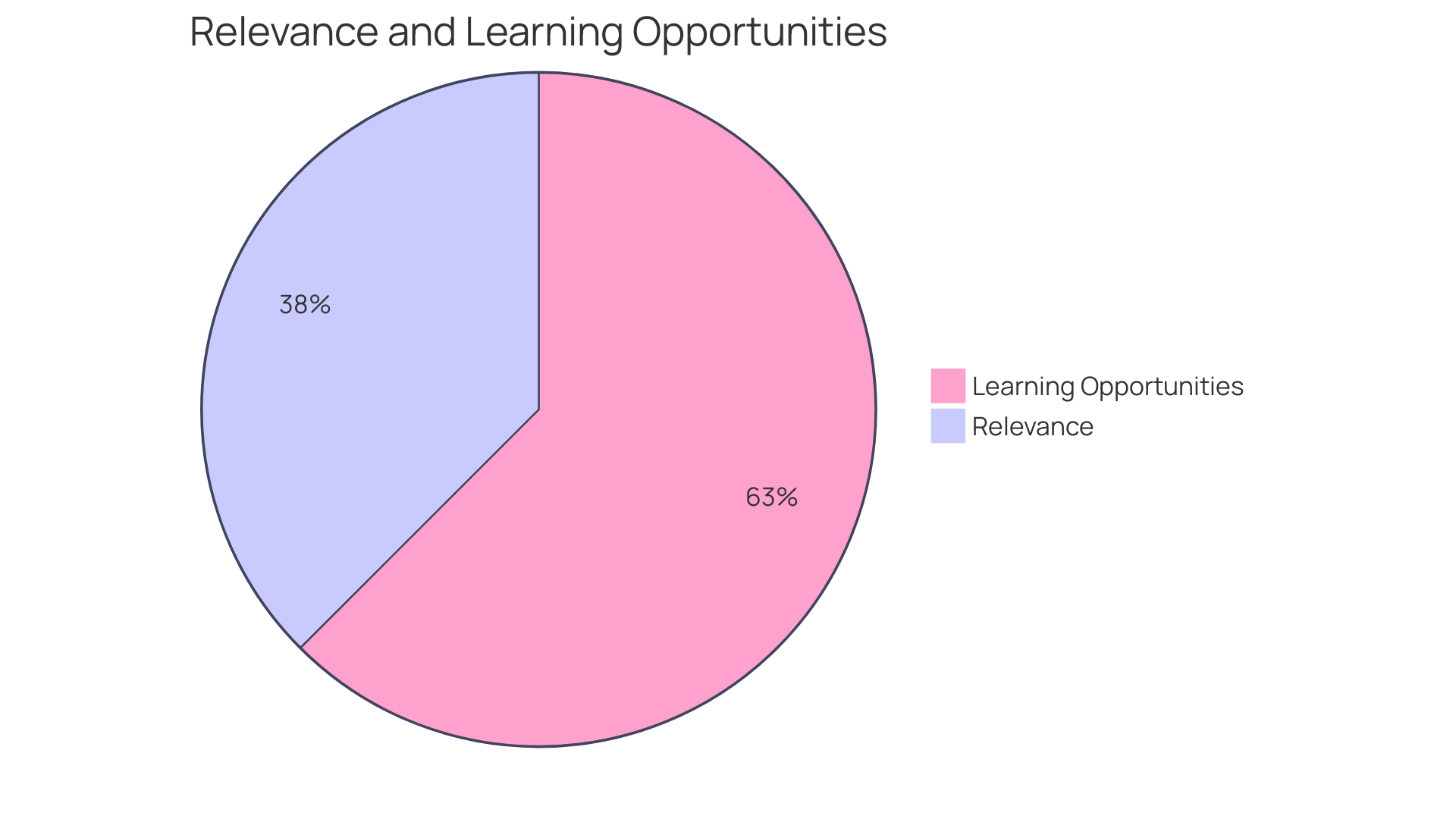
Zoning Categories and Their Restrictions
Land zoning categories play a crucial role in urban planning, shaping the layout and functionality of our communities. These categories, such as residential, commercial, industrial, agricultural, and mixed-use, are not just arbitrary designations; they come with specific rules and regulations that dictate how land within each zone can be utilized. These parameters govern a variety of development aspects, including building height, density, setbacks, and parking requirements. Such regulations are key to preserving a balanced coexistence of different land uses, which is essential for both property owners and community members at large.
In exploring the practicalities of zoning, we find compelling examples, such as the recent case studies on zoning reforms that faced legal challenges. Brian J. Connolly's insights, derived from his extensive legal and academic expertise in land use and development law, underscore the complex interplay between public and private regulation of land use. These interactions are pivotal in addressing housing affordability and influencing urban redevelopment.
For instance, Connolly's work highlights the vigilant use of legal tools and procedures by reform opponents, illustrating the contentious nature of zoning changes. His experiences, ranging from drafting U.S. Supreme Court amicus curiae briefs to serving as an expert witness, provide a rich perspective on the legal intricacies of zoning.
Moreover, the multifaceted nature of zoning is further evidenced by the Provincial Planning Statement (PPS), 2024, which underscores the importance of land use planning in meeting a variety of community needs, from housing to environmental protection. This is complemented by ground-level initiatives such as those in California, where a study of single-family-only zoning sheds light on the challenges and nuances of municipal zoning across a vast array of jurisdictions.
Zoning's impact on our living spaces is profound, and it is continually evolving. This is reflected in the words of James Freas, who underscores the dynamic process of zoning ordinance rewrites, which are geared towards implementing previously-established housing plans and responding to changing city conditions. These revisions have real-world implications, including the potential to increase residential density and offer development rights bonuses for affordable housing.
The complexity of zoning is also mirrored in the diverse statistics gathered from various municipalities, revealing the depth of regulations that shape our urban fabric. These range from minimum lot sizes to maximum permitted densities, as well as parking and height restrictions, all of which are critical to understanding the full scope of zoning's influence on property development and community planning.
Understanding zoning is pivotal for anyone involved in land development or urban planning. It's not just about categorizing land; it's about crafting the very essence of our living environments, ensuring that they meet the present and future needs of our communities while balancing the rights and interests of all stakeholders involved.
Variances and Exceptions to Zoning Rules
Property owners seeking to use their land in ways not aligned with local zoning regulations have recourse through the application for variances and exceptions. Variances are sought when property owners face unique circumstances that render the strict adherence to zoning laws impractical or create undue hardship. For instance, reducing the distance a building must be set back from the road is a common area variance request. Alternatively, use variances allow for changes in the property's designated purpose, such as converting a residential building into a commercial space.
The application process for these variances is rigorous, necessitating a comprehensive presentation to the local zoning board, which details the justification for the deviation. This includes a public hearing, where community members can voice their support or objections. It's crucial for property owners to understand that criteria for approval hinge on demonstrating that the variance will not adversely impact the public welfare and is essential due to hardships imposed by the current zoning laws.
The narrative of Orlando Capote, who has valiantly defended his family home against encroaching development in Coral Gables, underscores the personal impact of zoning regulations and the contentious nature of land use debates. Similarly, the Zoning Justice Project by the Institute for Justice highlights the broader implications of zoning laws on property rights and individual freedom, advocating for reforms to counteract overly restrictive zoning practices.
It's essential for property owners to convey their requests clearly and succinctly, avoiding technical jargon that may alienate or confuse stakeholders. As noted by Taiwo Jaiyeoba, the effectiveness of these applications is often improved by using language that resonates with the local community's experiences rather than referencing dissimilar cities or technical terms.
Ultimately, the fate of such requests rests in the hands of the zoning board, which must balance individual property rights with the collective interests of the community. The process and outcomes of zoning variance applications, as evidenced by legal expert Brian J. Connolly's work, can have significant implications for housing affordability, urban redevelopment, and the exercise of constitutional rights.
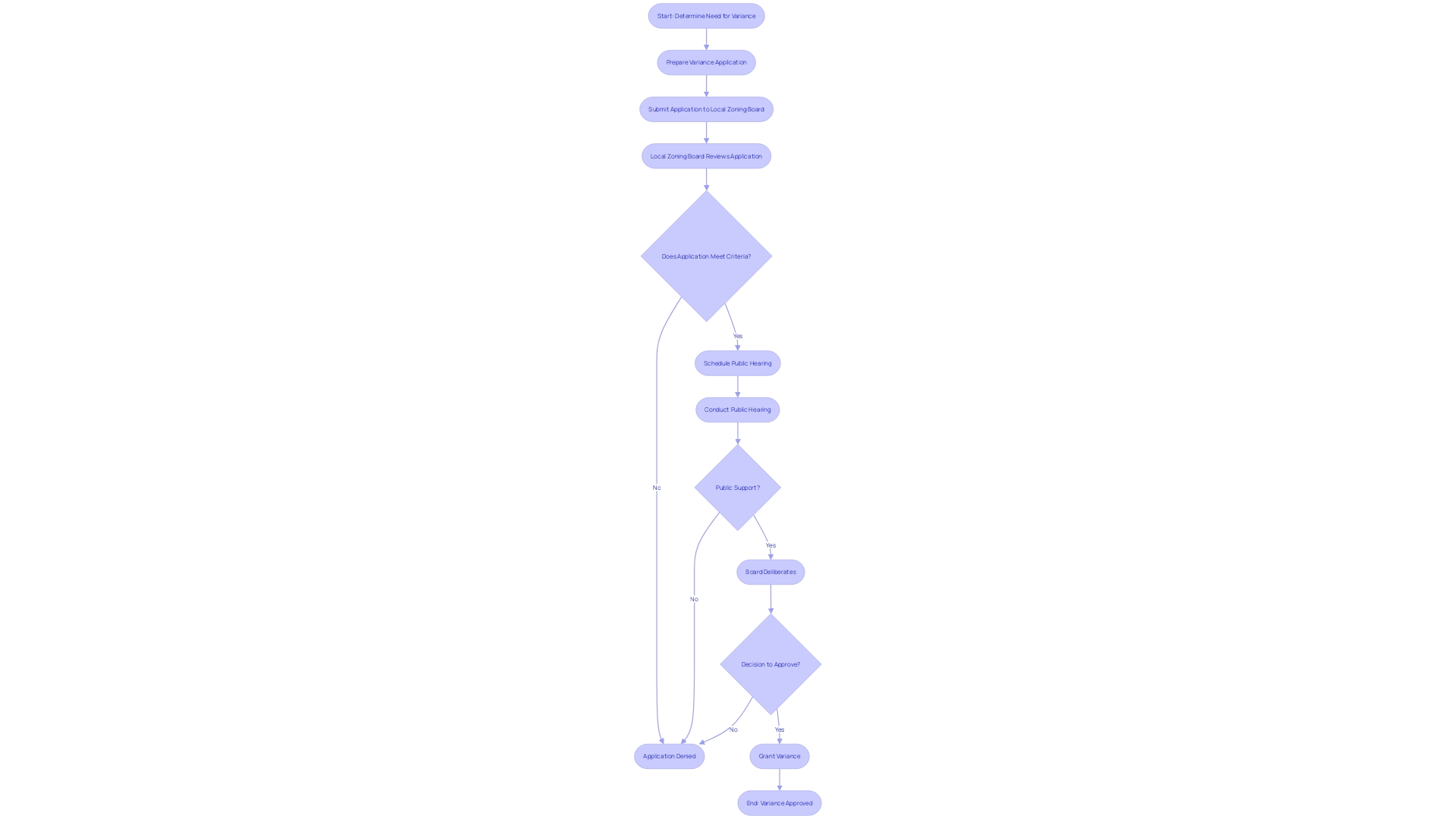
Impact on Property Value and Use
Private land use controls, such as restrictive covenants and deed restrictions, play a pivotal role in maintaining the integrity of property values. These controls ensure that the usage of neighboring properties aligns with established community standards, thereby preserving the character and appeal of local areas. Additionally, zoning regulations serve as a critical tool for shaping the potential development types within specific vicinities. These regulations, which are often a reflection of collective agreements under state-granted bundles of rights, can significantly influence property values by dictating permissible uses. For instance, the rights to airspace and subsurface areas have evolved over time, with statutory and common law provisions now recognizing the three-dimensional nature of property rights, as seen in many property title systems globally.
Furthermore, the concept of property rights encompasses a complex bundle of rights and obligations that are not absolute but shaped by legal and regulatory frameworks. This bundle of rights, which includes the capacity to perform certain activities within a defined three-dimensional space, is essential for property owners to comprehend, particularly when embarking on investment or development endeavors. Recent zoning reforms, such as those in California aimed at addressing housing crises, highlight the dynamic nature of zoning regulations and their impact on property development possibilities. Such legislative changes, including the permission of accessory dwelling units, underscore the ongoing need for property owners to stay informed about regulatory shifts that could affect their property's value and developmental potential.
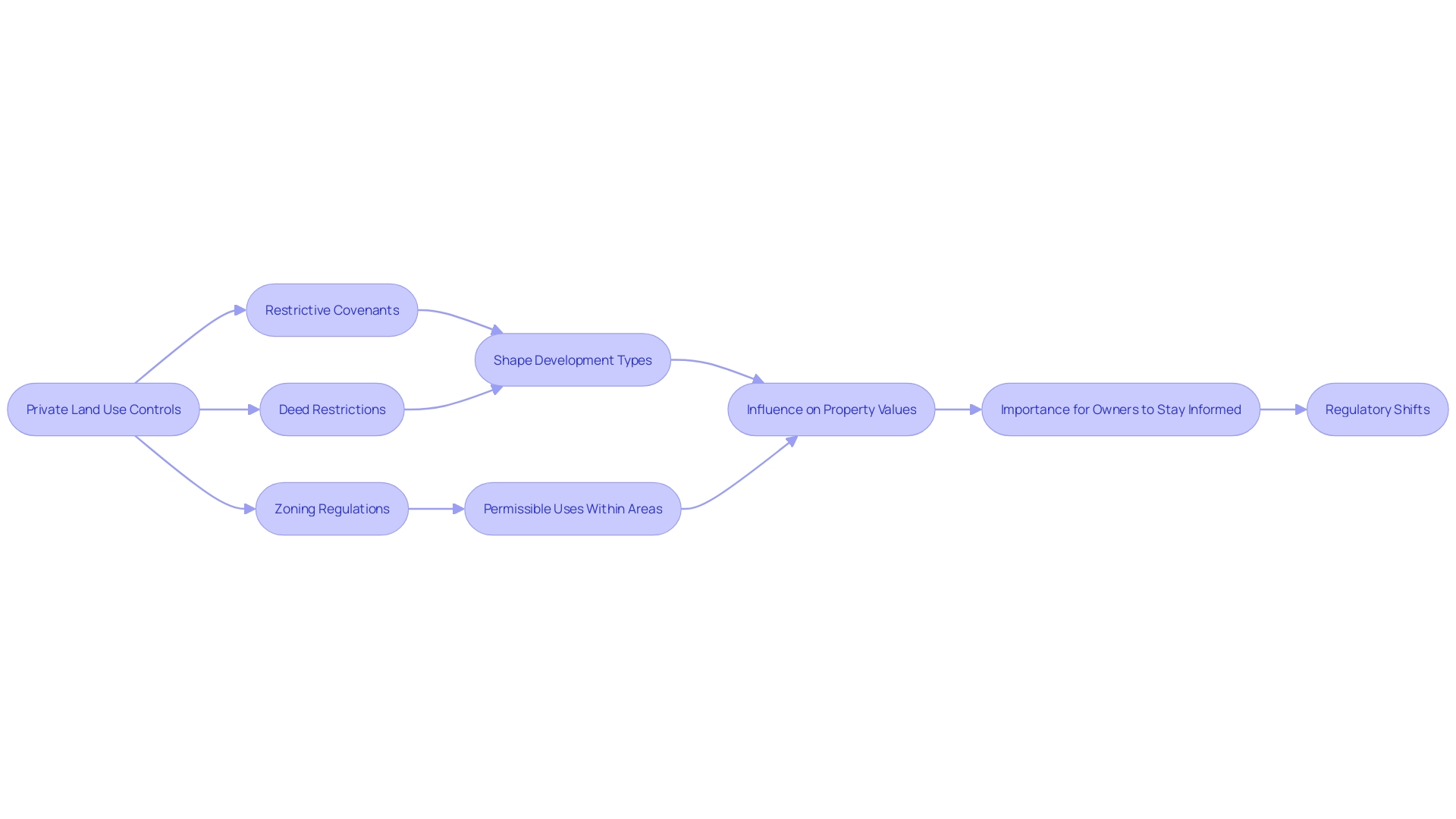
Legal Considerations and Challenges
Navigating the intricate landscape of property rights, zoning regulations, and land use controls is a multifaceted endeavor requiring a deep understanding of various legal dimensions. Property rights extend not only to the surface but also to the airspace and subterranean levels, subject to statutory and common law. For instance, vertical airspace access may be restricted by easements that protect a neighboring property owner's access to wind or sunlight. Similarly, underground space is not automatically included in a property owner's rights bundle, allowing for infrastructure such as tunnels at sufficient depths without infringing on those rights. In this context, contemporary property titles often reflect these three-dimensional considerations.
The evolving nature of property rights is exemplified in the growing interest in green burial practices, which highlight the blend of personal choice and environmental responsibility within land use. Green burial—direct earth interment with biodegradable materials and without embalming—is an eco-conscious option that also adheres to certain religious traditions. This practice has seen a resurgence in the United States, with 60% of Americans considering green burial as of 2023, a notable increase from 55.7% in 2021. The establishment of conservation burial grounds, in collaboration with conservation organizations, ensures the preservation of natural lands through easements or deed restrictions, thereby creating a permanent legacy of space and environmental stewardship.
The legal framework surrounding land use and zoning is further complicated by the need for public agencies to exercise discretionary powers in concert with existing regulations. The definition of a 'project' under the California Environmental Quality Act (CEQA) for example, includes activities that may cause direct or indirect physical changes in the environment and require discretionary approval by public agencies. This adds another layer of complexity for property owners and developers who must navigate the legal system to obtain the necessary entitlements for use.
Moreover, legal challenges can arise from standing issues, where interested parties must establish the right to bring a case forward. Recent legal proceedings have underscored the importance of standing, with courts recognizing the right of organizations to challenge development agreements based on potential violations of prior agreements or city codes.
In light of these multifaceted legal considerations, it is crucial for property owners and developers to seek expert legal counsel. This ensures compliance with the intricate web of private land use controls, zoning laws, and public interests, thereby mitigating potential challenges and supporting responsible land development that respects both individual rights and collective societal values.
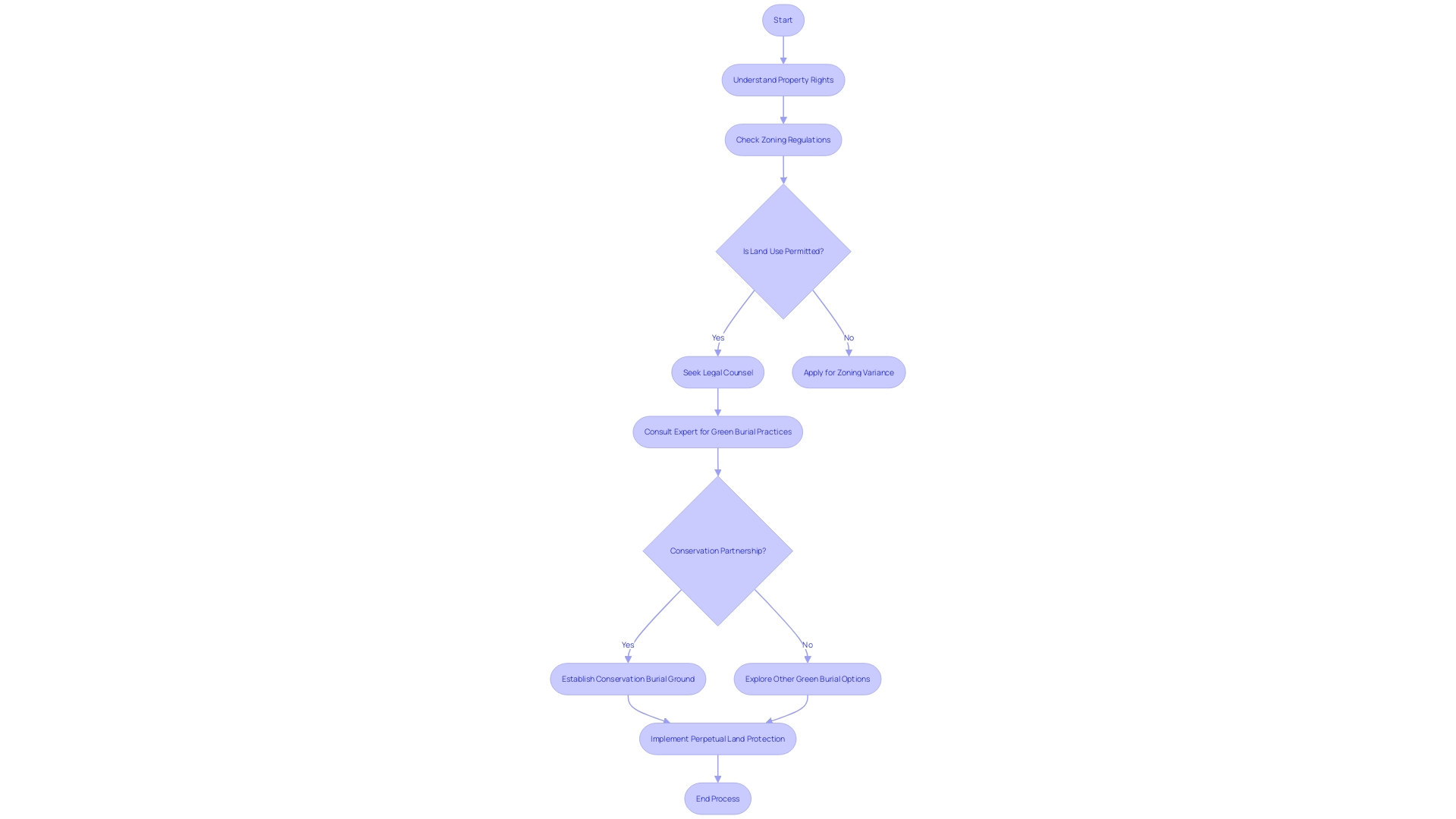
Best Practices for Implementing Private Land Use Controls
Private land use controls, while complex, are a powerful means of shaping property development and conserving land. To establish these controls effectively, property owners must delineate precise terms that reflect their goals, often in collaboration with legal experts. The end goal is to create restrictions that are equitable, reasonable, and enforceable. A stark reminder of the importance of robust land use controls can be drawn from California's utility companies, where inadequate safety standards have led to catastrophic wildfires. These cases underscore the necessity of ongoing monitoring and enforcement to prevent and address infractions. Parallel to this, the Provincial Planning Statement (PPS), 2024, serves as a blueprint for municipalities to balance development with environmental and resource protection. Reflecting on the layered nature of property rights, conservation easements have emerged as a favored tool, enabling land trusts and governments to preserve natural spaces without changing ownership. This multi-dimensional approach to property rights is critical for addressing modern environmental challenges, such as biodiversity loss and climate change, in an integrated and sustainable manner. As the global community endeavors to protect 30% of land and water by 2030, private land use controls, alongside conservation easements, play a significant role in complementing government-led protection efforts.

Conclusion
Private land use controls, such as conservation easements and deed restrictions, are essential tools for protecting communities and preserving the natural state of the land. They align with the growing trends towards green burial practices and sustainable management of private nature reserves, complementing government-led conservation efforts worldwide.
Understanding the three-dimensional nature of property rights is crucial in land use planning. Property rights, regulated by law, form a bundle of rights and obligations that define land usage while respecting community values and environmental integrity.
Private land use controls, like restrictive covenants and homeowner association rules, help balance private property rights with community interests. They address specific concerns and are supported by broader regulatory frameworks and innovative approaches like land banks, contributing to responsible land development and stewardship.
Adherence to zoning laws is a legal requirement for property owners. These regulations guide urban development, housing affordability, and the preservation of neighborhood character. Staying informed about zoning laws is essential to understand their impact on property values and development.
The interplay between public and private land use controls highlights the complexity of managing land effectively. Zoning regulations serve as blueprints for urban development, preserving community order while considering collective interests.
Property owners can seek variances and exceptions to zoning rules when necessary. These processes require justifications based on public welfare and hardships imposed by current zoning laws.
Private land use controls, zoning regulations, and land use laws significantly impact property values and usage. They ensure that neighboring properties align with community standards, preserving the character of local areas. Seeking expert legal counsel is crucial for navigating the intricate landscape of property rights and zoning regulations.
In conclusion, private land use controls and zoning regulations play a vital role in protecting communities, preserving the environment, and achieving responsible land development. They reflect the growing emphasis on sustainability and the need to balance individual property rights with collective interests. Understanding property rights, adhering to zoning laws, and seeking variances when necessary are key for effective land management and sustainable development.
Take control of your property with private land use controls.




